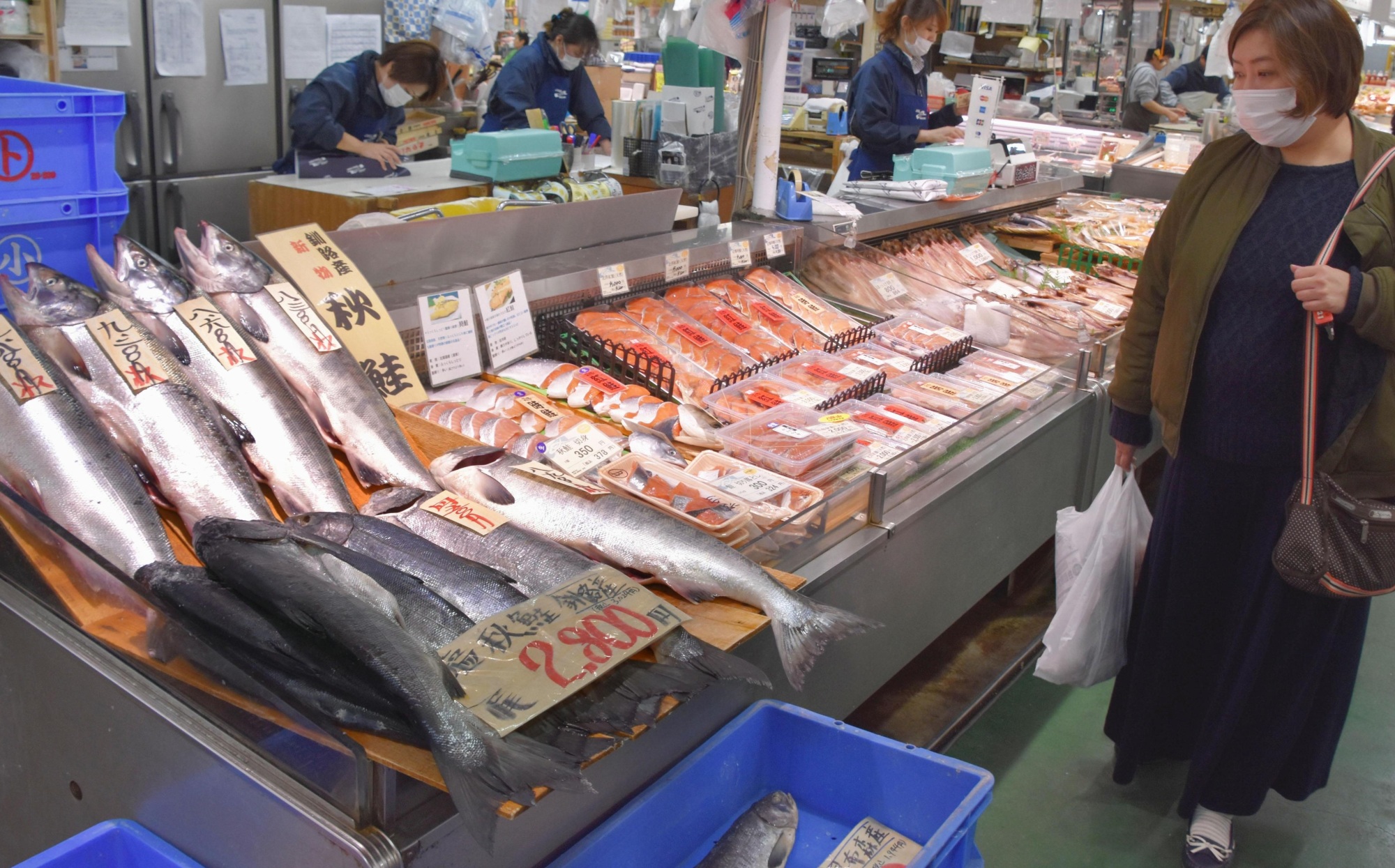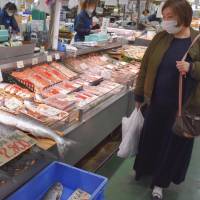Poor catches for salmon and saury in the North Pacific have caused prices to spike across Japan as the year-end shopping season begins.
In Hokkaido, which accounts for 70 to 80 percent of the nation's autumn salmon catch, this season's haul fell by more than 30 percent in the period ended Nov. 10, dropping to around 15.3 million fish, according to the prefecture's fishery management division.
Wholesale prices for autumn salmon stood at ¥1,080 per kilogram for the week through Nov. 9 in Tokyo's Tsukiji market, up about 50 percent from the previous year.
The poor autumn salmon catches, which began emerging last year, are believed to be a result of a chilly temperature-induced die-off that reduced the population of salmon fry several years ago, the Hokkaido Research Organization said.
Salmon roe also got pricey, with the average wholesale price jumping nearly 1.5 times to ¥7,485 per kilogram in October compared with the same month a year ago, the Sapporo Central Wholesale Market said.
In Hokkaido, a series of thefts have recently occurred in which roe was taken from the abdomens of female salmon kept in breeding facilities.
In addition, fishermen are struggling with poor catches of saury, a slender but fatty fish popular as an autumn delicacy.
Nationwide, catches of the fish totaled 45,756 tons as of Oct. 31, a fishery cooperative for saury in Tokyo said. The group said it expects this year's catch to be the lowest since 1976, when it fell below 100,000 tons. In Tsukiji, wholesale prices for saury are nearly 30 percent high from a year earlier.
The Fisheries Agency said the changes in seawater temperatures could have altered migration routes, producing the poor saury catch.
Major seafood company Maruha Nichiro Corp. will pass the higher costs on to consumers by raising prices for canned salmon products by ¥30 and canned saury by ¥40 to ¥80 from January.




